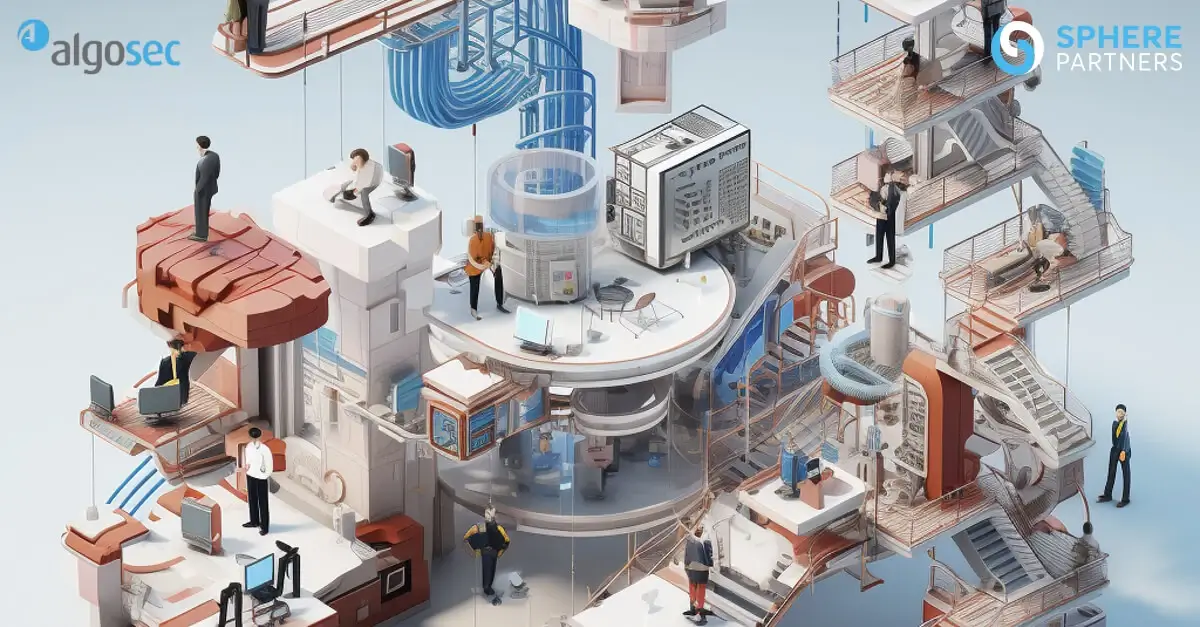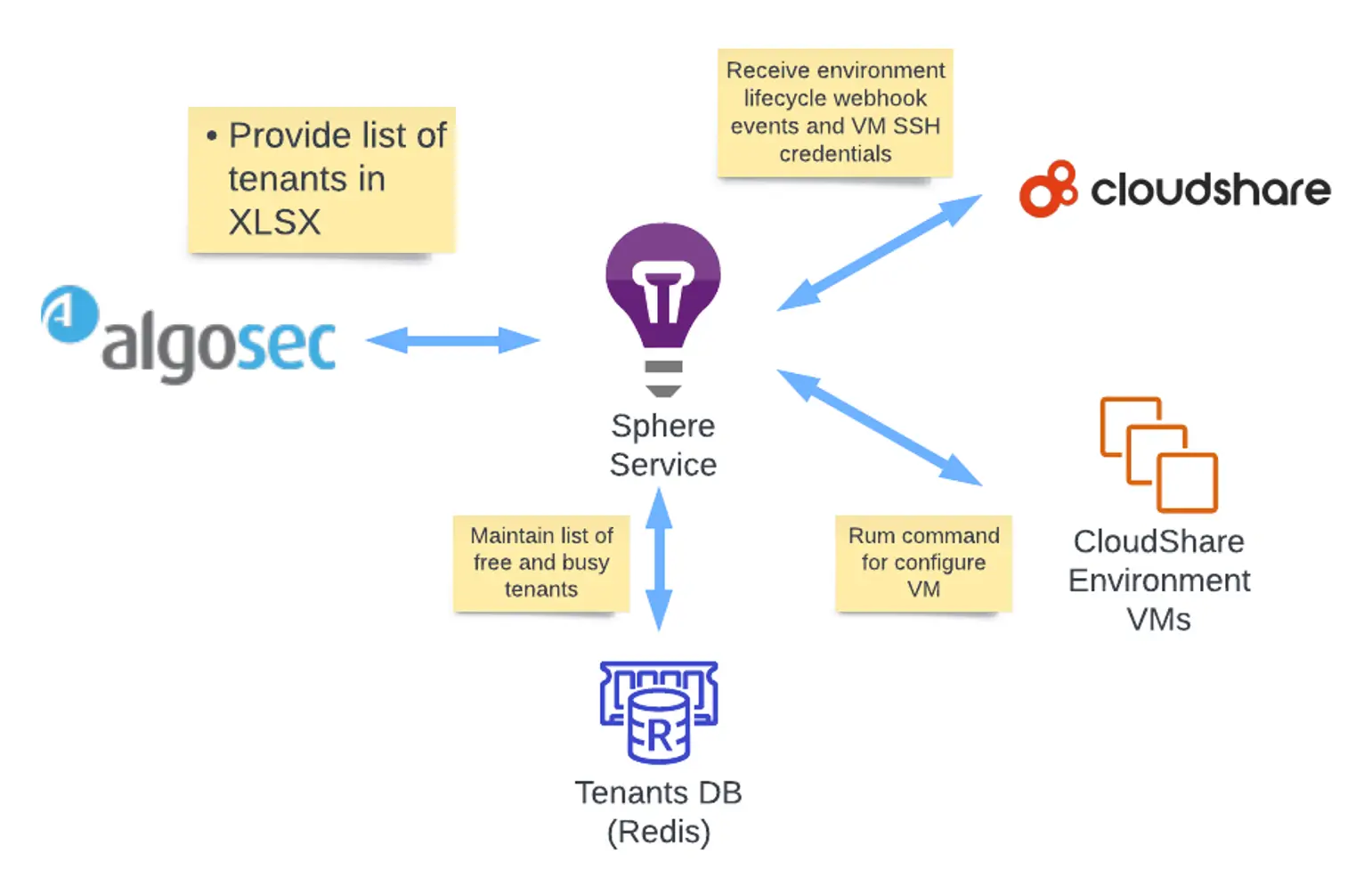Sphere’s Microservice Transforms Algosec and CloudShare Integration, Boosting Efficiency and Automation
01
Challenge
Develop a microservice to bridge Algosec and CloudShare, resolving Lambda and database hurdles while ensuring robust, reliable integration for both systems.
03
Results
The microservice streamlined resource management, automating processes, enabling Algosec to efficiently integrate with CloudShare, offering error-case solutions, and promising resource and operational efficiency.

The Challenge
Sphere’s Microservice Simplifies Algosec and CloudShare Integration for Efficiency and Automation
The Solution
Sphere Simplifies Algosec and CloudShare Cooperation, Paving the Way for Effortless Security and Education Integration
The solution revolved around the creation of a specialized computer program known as a “microservice.” This microservice served as a crucial link between two essential systems: Algosec (responsible for security) and CloudShare (utilized for educational purposes).
Imagine that CloudShare desired to harness Algosec’s tools for specific lessons. Sphere’s mission was to make this integration seamless. Sphere developed the microservice to facilitate the setup of CloudShare’s virtual computers, essential for Algosec’s operations, and to ensure a balanced allocation of Algosec users across different areas within CloudShare.
Initially, Sphere contemplated using AWS Lambdas, a specific type of computer program, and avoiding the use of RDS, a particular database. Additionally, comprehensive documentation was required to track the team’s progress. However, as the Sphere team delved deeper into the project, they discovered more efficient methods.
This led to a change in the plan. Instead of Lambdas, Sphere opted for a different type of computer called “AWS VMs,” and they replaced the database with “REDIS.” This adjustment significantly enhanced the solution.
Another challenge Sphere encountered was ensuring the microservice’s ability to recover in case of issues with Algosec or CloudShare. To address this, the Sphere team maintained daily communication with the Algosec and CloudShare teams and focused on several key tasks:
- Gathering information about activities in CloudShare.
- Configuring the virtual computers in CloudShare and connecting them to Algosec.
- Ensuring the proper distribution of Algosec’s users within CloudShare.

Here’s how the microservice operated: When CloudShare provided information about a newly created “Environment,” Sphere used this data to set up a virtual computer in CloudShare. The team also established the connection to Algosec and ensured that Algosec’s users could effectively use the computer. If there were no available users, the computer remained active until someone needed it. When CloudShare notified the Sphere team that an “Environment” had been deleted, they ensured a tidy cleanup process.
As a result, Algosec gained efficient control over the computers in CloudShare. Sphere’s microservice also facilitated Algosec in monitoring students, class schedules, and more. Every time a new lesson commenced, a dedicated computer was created for each student, linked to their designated area, and everything was configured automatically. When the lesson concluded, the Sphere team ensured a reset for the next group of students.
Prior to the introduction of the microservice, all these tasks had to be carried out manually, consuming a significant amount of time. However, with the microservice in place, everything was automated, resulting in a much quicker and more efficient process.
Sphere also developed a contingency plan to address potential issues, ensuring Algosec and CloudShare could rely on a seamless solution.
In the long run, Sphere’s automated microservice is expected to yield substantial cost savings and significantly enhance operational efficiency for Algosec and CloudShare. Sphere has established a successful partnership with these organizations, committed to delivering top-quality work and ensuring client satisfaction.
Outcomes and Results
Sphere’s Microservice Transforms Algosec and CloudShare Collaboration, Automating Teaching and Enhancing Security
Thanks to Sphere’s efforts, Algosec can now effortlessly manage and streamline their use of CloudShare for educational purposes. Sphere developed a specialized program known as a “microservice” to seamlessly connect Algosec’s security system with CloudShare’s educational platform. This microservice simplifies the process for CloudShare to leverage Algosec’s tools for their courses. It takes care of setting up virtual computers and ensures that Algosec’s users can access them with ease. Moreover, it keeps a close watch on various aspects, such as student numbers and study schedules.
Prior to the creation of this microservice by Sphere, all these tasks required manual intervention, which was time-consuming and resource-intensive. However, now everything operates automatically, saving time and ensuring smooth operations.
Sphere also ensured that the microservice is equipped to promptly address any issues that may arise. This feature helps Algosec and CloudShare collaborate seamlessly without disruptions. In the long run, this automated microservice is poised to deliver substantial cost savings for Algosec and CloudShare while simplifying their work. Sphere has also nurtured a strong partnership with them, committed to delivering consistently high-quality work and ensuring client satisfaction.
Let’s talk about your Custom Software Engineering project.
Fill out the contact form and one of our Client Partners will be immediately in touch within the next business day.
Our experienced senior consultants and engineers are ready to help you design your solution, scale your capabilities, eliminate technical bottlenecks, and accelerate speed to market.